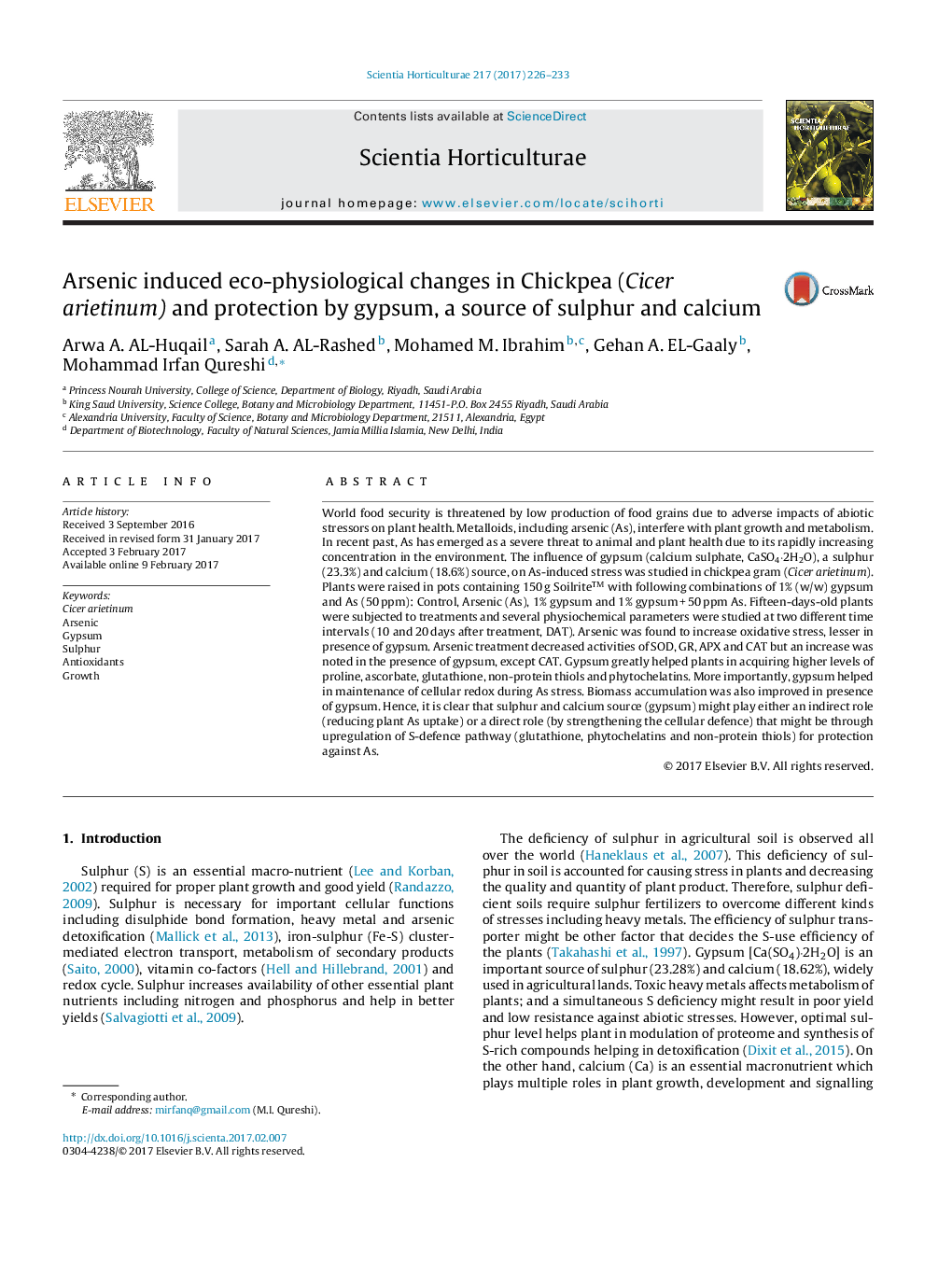| کد مقاله | کد نشریه | سال انتشار | مقاله انگلیسی | نسخه تمام متن |
|---|---|---|---|---|
| 5769694 | 1628781 | 2017 | 8 صفحه PDF | دانلود رایگان |

- Impact of gypsum and arsenic was studied in Cicer arietinum (Chickpea).
- Gypsum (S and Ca source) tremendously stimulated plant defence as well as growth.
- Arsenic was very deleterious for all parameters but gypsum offered great protection.
- Gypsum improved proline, enzymatic and non-enzymatic defence under arsenic toxicity.
- Gypsum increased levels of glutathione, NPTs and PCs, more in response to arsenic.
World food security is threatened by low production of food grains due to adverse impacts of abiotic stressors on plant health. Metalloids, including arsenic (As), interfere with plant growth and metabolism. In recent past, As has emerged as a severe threat to animal and plant health due to its rapidly increasing concentration in the environment. The influence of gypsum (calcium sulphate, CaSO4·2H2O), a sulphur (23.3%) and calcium (18.6%) source, on As-induced stress was studied in chickpea gram (Cicer arietinum). Plants were raised in pots containing 150 g Soilrite⢠with following combinations of 1% (w/w) gypsum and As (50 ppm): Control, Arsenic (As), 1% gypsum and 1% gypsum + 50 ppm As. Fifteen-days-old plants were subjected to treatments and several physiochemical parameters were studied at two different time intervals (10 and 20 days after treatment, DAT). Arsenic was found to increase oxidative stress, lesser in presence of gypsum. Arsenic treatment decreased activities of SOD, GR, APX and CAT but an increase was noted in the presence of gypsum, except CAT. Gypsum greatly helped plants in acquiring higher levels of proline, ascorbate, glutathione, non-protein thiols and phytochelatins. More importantly, gypsum helped in maintenance of cellular redox during As stress. Biomass accumulation was also improved in presence of gypsum. Hence, it is clear that sulphur and calcium source (gypsum) might play either an indirect role (reducing plant As uptake) or a direct role (by strengthening the cellular defence) that might be through upregulation of S-defence pathway (glutathione, phytochelatins and non-protein thiols) for protection against As.
Journal: Scientia Horticulturae - Volume 217, 15 March 2017, Pages 226-233